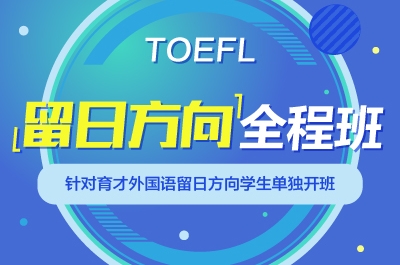2016年6月4日新SAT亚太写作
发布时间:2016-06-06 11:01:00 关注量:4273次

阅读原文
Starting in September, the European Union will ban vacuum cleaners using more than 1,600 watts of power, with the limit slated to be lowered to 900 watts by 2017. This ban won't just affect a handful of the worst offenders. According to the European Commission, the average vacuum cleaner sold today uses 1,800 watts.
Intended largely to reduce carbon emissions, the vacuum cleaner ban joins numerous other regulations throughout the world that severely restrict consumers' choices. Want an incandescent light bulb? Too bad – they're banned. How about a gas guzzling car? Sorry – they're being squeezed out by tighter fuel economy standards.
Rules like these rub many people the wrong way because they represent government intrusion into even the most minute of personal decisions. Do we really want the government telling us what kind of vacuum cleaner or light bulb to buy? Don't policy makers have better things to think about? Backers of such regulations counter that, when people buy powerful vacuum cleaners and incandescent bulbs, they don't take into account the spillover costs they impose on others by contributing to climate change.
Fortunately, there's a better solution. A carbon tax – set to reflect the spillover costs of carbon emissions – would eliminate the need to micromanage the kinds of vacuum cleaners and light bulbs that people can buy. Instead, the tax would provide consumers with an incentive to act in a socially responsible manner by ensuring that those who operate such products pick up the tab for the climate harm they cause.
The main advantage of the carbon tax is that it leaves consumers free to decide whether to buy energy-efficient vacuum cleaners and light bulbs or whether to reduce their carbon footprint in other ways. That's a big improvement over the regulatory approach because individual consumers are in a better position than government bureaucrats to figure out the least painful way to reduce their contribution to climate change.
阅读:
首先, 是大家关注的阅读部分的特征:
就文章难度和题目难度两方面而言, 不同篇章和不同题目的难度有升有降, 总体持平.
1. 文章内容:
阅读文章整体难度基本和5月持平,但不同文章类型的阅读难度和5月有所不同.
---1. 小说:1篇,难度较5月低,较好读,Chekov的英译版本小说A Boring Story,两代人对戏剧这一文化活动的不同看法
---2. 科学:2篇,文章难度较5月略低,一篇讨论关于immune system和vaccine研究发现让人意想不到的结果,另一篇讨论champanzee能发出不同声音警告同伴潜在危险,证明其很可能具有语言能力。两篇文章结构均较为清晰,通过实验证明研究结果,整体阅读难度不大
---3. 社科:1篇,文章难度明显低于5月,探讨大数据现象和趋势,通过与过去传统的抽样调查研究方法进行对比,分析了Big Data的优劣势,并辅以图表进行了对未来趋势的预测
---4. 史政:1篇(对比阅读),难度高于5月,此次史政类文章讨论政府是否应对言论自由进行限制,由于文章长难句较多,还有一定数量的排比、反问、双重否定等现象,增加了阅读的难度。
2. 题型特点:
阅读题型依然符合官方指南的题型范畴,并未出现超过官方OG样题以及PSAT真题以外的题目类型,新SAT的新题型图表题和循证题依然有所考察。在时间紧张的情况下,本次考试的题目设置整体难度基本持平,略有增加。
---1. 5月主旨类题目考查较多,6月的这次考试更加关注文章细节的定位和理
---2. 5月未考查的文章结构题这一次有所涉及
---3. 部分题目的设置有一定难度,可能会增加考生的题目理解和定位速度,增加答题时间
---4. 本次词汇题考查难度较5月略难,涉及的词汇范围较广,有较为常见的,如nature, role, establish,也有并不一定熟悉的词汇,如winnow, tap,词汇题的选项设置也增加了难度,选项词汇出现了如pare, institute (verb form), pump out等平时较少接触的词或词组,更加要求考生具备结合上下文推断词汇含义的能力, 对于winnow和tap这两个单词的考察还是很有代表性, 因为这些单词本身并不是特别日常使用的单词, 或许会给我们一些新的启发.
语法
语法部分整体难度和5月相比本持平, 文章内容较5月略低, 比较好读, 题目难度略高. 语法部分的考点不难, 考察文中的词汇题4-5个, 此外较有特点的是还考察了如何基于文意进行句子的删减移动, 同时大量考察了是否需要在某个位置插入某个额外证据(甚至有一道这样的考察习题还和图表进行了一定的结合), 以下, 我们精选了其中一些语法部分的词汇辨析的题目的考察单词和具体选项, 供大家参考:
1. needing
-deprived
-meager
-deficient
2. awareness
-insight
-perception
-comphrension
3. incline
-rise
-boost
-ascend
4. embrace
-enfold
-extend to
-reach out to
数学
考试的数学部分难度较低, 用某位我们考试团的团员的话语来评价就是"让人做到后来很有自信". 也就是说, 不但没有出现类似于教辅参考书(Kaplan/Princeton Review)中的数学部分的难题, 和我们平时练习的OG部分的数学题目难度持平, 绝大部分同学做完之后还有非常充裕的时间进行检查, 大家只要不犯低级错误, 理应就能拿到不错的分数.
没有意外的考点, 没有纠结的难题, 没有特别的陷阱.
和平校区地址:沈阳市和平区南京南街1甲欧亚联营商务大厦1625(024-23286318)
皇姑校区地址:沈阳市皇姑区黄河南大街70号甲3门(省实验中学斜对面)(024-86250988)

咨询热线:400-709-9019
本文由沈阳SAT培训 通途国际英语原创,转载请保留链接: http://www.tingtoo.org/SAT/zhinan/66.html













